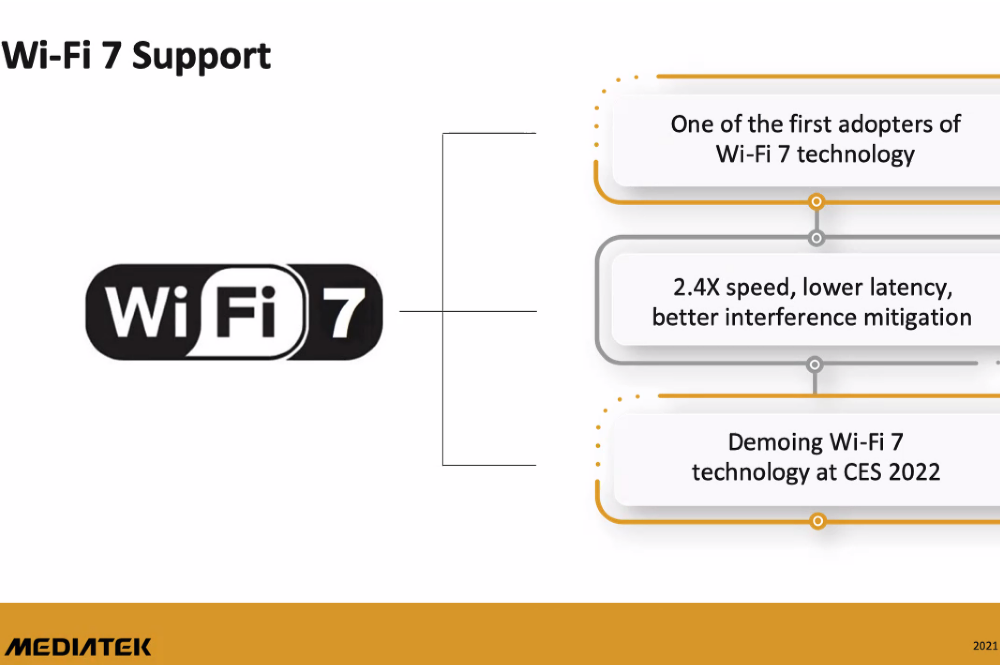

It has only been two years since the release of Wi-Fi 6 wireless technology (Related article:Is Now the Time to Replace Your WiFi 6 Router?), and Wi-Fi 7 has followed. Wi-Fi 7 will be the Wi-Fi wireless communication technology with the fastest transmission rate at present, suitable for more application scenarios, such as AR/VR, 8k video streaming, cloud computing, remote office, wireless games, remote Medical, etc. bring a better user experience. Wi-Fi 7 has entered the practical stage and has entered the eyes of users.
Wi-Fi7 and Wi-Fi6 wireless communication technology comparison
RELATED ARTICLE:
Wi-Fi 7 introduces many new technologies on the basis of Wi-Fi 6. Wireless communication technology mainly reflects:
Features of Wi-Fi 7:
1. Faster
 Wi-Fi 7 supports 20/40 MHz channel bandwidth in the 2.4 GHz frequency band, and 20/40/80/160 MHz channel bandwidth in the 5 GHz frequency band. The license-free spectrum in the 2.4GHz and 5GHz frequency bands is limited and crowded, and the advantages of the 6GHz frequency band are reflected come out. Wi-Fi 7 supports 20/40/80/160/320 MHz channel bandwidth on the 6 GHz frequency band, which makes Wi-Fi 7 have a faster transmission rate and lightning speed. In addition, Wi-Fi 7 also supports extremely high data throughput, capable of supporting a throughput of up to 30Gbps, three times that of Wi-Fi 6, meeting the throughput requirements of massive wireless network scenarios, supporting 16 spatial streams, and more The spatial flow of will lead to more powerful features.
Wi-Fi 7 supports 20/40 MHz channel bandwidth in the 2.4 GHz frequency band, and 20/40/80/160 MHz channel bandwidth in the 5 GHz frequency band. The license-free spectrum in the 2.4GHz and 5GHz frequency bands is limited and crowded, and the advantages of the 6GHz frequency band are reflected come out. Wi-Fi 7 supports 20/40/80/160/320 MHz channel bandwidth on the 6 GHz frequency band, which makes Wi-Fi 7 have a faster transmission rate and lightning speed. In addition, Wi-Fi 7 also supports extremely high data throughput, capable of supporting a throughput of up to 30Gbps, three times that of Wi-Fi 6, meeting the throughput requirements of massive wireless network scenarios, supporting 16 spatial streams, and more The spatial flow of will lead to more powerful features.
2. Ultra-low latency
Latency is a key parameter of user experience. Currently, Wi-Fi 6 can achieve a delay of 10-20ms, while Wi-Fi 7 can achieve a delay of less than 10ms. Ultra-low latency enables users to play in AR/VR, cloud games, Enhanced experience in aspects such as ultra-high-definition video streaming.
3. Strong connection
WiFi 7 introduces the Wi-Fi 7 Multi-Link multi-link mechanism to achieve efficient use of spectrum resources. By using the MLO (Multi-Link Operation) tool to dynamically balance the connections between multiple links, if a link is lost or the link is disturbed, the connection can be automatically switched to the undisturbed link without interruption. The affected site runs normally on other links, enhancing the stability of transmission.
4. Reduce distractions
Wi-Fi 7 has enhanced many anti-interference functions on the original basis. Wi-Fi-7 has MRU and preamble puncture function for maximum flexibility, supports all possible sub-channels and high resolution in OFDMA and MU-MIMO modes The rate puncture mode provides better interference mitigation and provides the best QoS for different types of services. The coordinated scheduling between multiple APs in Wi-Fi 7 can effectively reduce the interference between APs and greatly improve the utilization of air interface resources.
5. Better roaming experience
MLO provides built-in roaming enhancements defined in the 802.11be communication standard protocol to improve user experience for seamless roaming. For example, when the device is far away from the AP, MLO will retain the ML connection between the AP and the device, and automatically operate in the 2.4 GHz frequency band without manually switching the frequency band; when the device is close to the AP, MLO can automatically operate in the 5 GHz and 6 GHz frequency bands , to obtain higher performance.
You may be thinking why do we need Wi-Fi 7?
With the continuous development of WLAN wireless technology, Wi-Fi wireless modules are used as the main means for families and enterprises to access the network. The current Wi-Fi technology cannot fully meet the requirements of consumers for throughput and delay. Compared with previous Wi-Fi technologies, Wi-Fi 7 can provide faster speeds, lower latency, and stronger connections, significantly improving the user experience.
ABOUT WLAN wireless technology:









